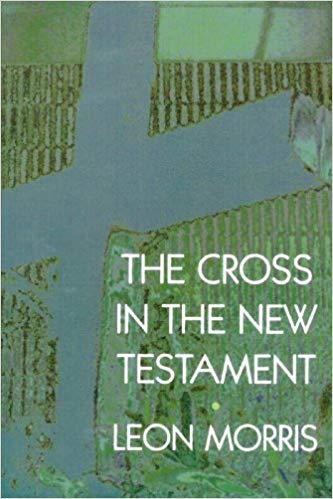A Brief Book Summary from Books At a Glance
By Steve West
About the Author
Leon Morris was the principal of Ridley College, Melbourne, Australia. He was one of the finest NT scholars of his generation, producing numerous commentaries and books that are still widely used today.
Introduction
In The Cross in the New Testament, Morris sets out how each NT author presents the atonement. He examines the unity and diversity of atonement teaching across the NT. In the end, he synthesizes and analyzes the material, and provides a strong defense of the multifaceted nature of the atonement and the essential idea of substitution.
Table of Contents
Chapter 1 The Cross in Matthew and Mark
Chapter 2 The Cross in the Lukan Writings: The Gospel
Chapter 3 The Cross in the Lukan Writings: The Acts
Chapter 4 The Cross in the Gospel According to John
Chapter 5 The Cross in the Pauline Epistles: The Plight of Man
Chapter 6 The Cross in the Pauline Epistles: The Salvation of God
Chapter 7 The Cross in the Pauline Epistles: Man’s Response
Chapter 8 The Cross in the Epistle to the Hebrews
Chapter 9 The Cross in the Catholic Epistles and Revelation
Chapter 10 Conclusion
Book Summary
Chapter 1: The Cross in Matthew and Mark
The Gospels are books about the atonement and were written around the story of the cross. Mark and Matthew establish at the beginning of their works that they are focusing on God’s good news in Christ, which is that he has provided salvation for sin. This is based on grace and mercy, because we do not earn it—it is Christ who pays the cost. We tend to minimize sin, but it merits punishment. The proclamation of coming judgment is found early in Matthew and Mark, and repentance is required. Without atonement, eternal punishment is inevitable. The atonement comes from the will and heart of God: the Father and Son agree completely about the work. Jesus knew and taught that he would suffer and die but gain glory, and he drew on OT imagery as evidence. As the Servant in Isaiah 53, Jesus suffered as a substitute. He went to die as the King, and it is through his death he establishes the kingdom. The Gospels show Jesus doing good—he is innocent of guilt and sin, yet he associated with sinners and offered them salvation. He identifies himself with sinners so that he can be their representative on the cross. Mark lays great emphasis on the fact that Jesus was alone and forsaken at this death. He was forsaken by God: we must take the cry of dereliction literally. The remission and forgiveness of sins is an important theme early on in both Matthew and Mark, and Jesus is explicit that it only comes through the shedding of his blood. His death is a ransom that pays the price for the release of slaves. In his death and resurrection, he triumphs over evil and demons. The way to benefit from what Christ has done is to believe; we need faith.
Chapter 2: The Cross in the Lukan Writings: I. The Gospel
People are sinful, not merely because they do wrong things, but because they are completely on the wrong track. An entire change in life-orientation is required. In Luke, Jesus is very clear that sin brings judgment. This judgment is not merely temporal or even just physical death—it is everlasting. Nevertheless, God offers salvation through Jesus. God is the Savior, and Christ brings God’s salvific purposes to fulfillment. God is the one who takes the initiative to find the lost, and the gospel proclaims there is nothing we can do to merit salvation. Law-keeping can never suffice. Jesus is always about the Father’s business, and he also has fellowship with sinners and the ordinary people that the religious establishment rejected. He associated with sinners because he was going to be their representative on the cross. Jesus is opposed by Satan and the powers of hell, but he is victorious over them. Jesus is even able to give his disciples power over demons. It is through the resurrection that he achieves ultimate victory. Luke puts a strong emphasis on the fact that Jesus provides salvation for every kind of person in the world, and this salvation is appropriated not by religious works but by faith. He stresses the historical facticity of the events in the life and death and resurrection of Jesus—historical events that have universal significance.
[To continue reading this summary, please see below....]The remainder of this article is premium content. Become a member to continue reading.
Already have an account? Sign In
